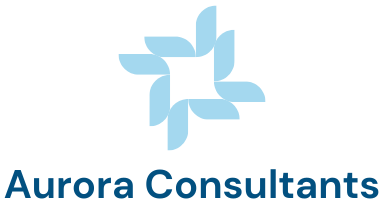Navigating the path to work in the U.S. can be an exciting yet challenging experience for Canadian desiring to broaden their horizons and capitalize on the abundant opportunities accessible across the border. However, obtaining a American work visa can be a difficult process that requires thorough planning and knowledge of immigration regulations.
For individuals from Canada seeking to make this shift, it is essential to get acquainted yourself with the multiple types of work visas available and the specific requirements for every type. From job-related visas to dedicated programs designed especially for Canadian workers, the environment of U.S. immigration law offers diverse avenues for qualified professionals. In this manual, we will analyze the crucial steps to get a U.S. work visa for Canadians, arming you with the insight needed to embark on your quest to a rewarding career in the U.S..
Types of United States Work Visas for Canadians
Canadians seeking work in the United States have several alternatives for work visas based on their skills and the nature of their job. One of the most common options is the TN visa, set up under the United States-Canada-Mexico Agreement. This visa is available for Canadian citizens in designated professional occupations, allowing them to work in the U.S. without undergoing extensive immigration processes. The process is relatively easy, requiring documentation proving the job offer and qualifications.
Another important work visa category is the H-1B visa, which is geared towards workers in specific occupations that require a higher education degree or its equivalent. This visa is sponsored by employers, meaning that a U.S. employer must file a petition on behalf of the Canadian applicant. The H-1B visa has an annual cap, making it highly sought after, but it opens doors for Canadians with specialized skills and expertise in disciplines such as tech, engineering, and healthcare.
Finally, the L-1 visa is designed for intra-company transferees, allowing Canadian companies to transfer employees to their U.S. branches. This is beneficial for Canadians working for multinational corporations, as it provides a seamless transition to the U.S. job market. The L-1 visa comes in two types: L-1A for managers and executives and L-1B for employees with specialized knowledge. Both types offer a pathway for Canadians to expand their professions in the United States.
Process Steps for USA Work Visa Applications
The primary step in securing a USA employment visa as a Canadian is determining the type of permit that fits your qualifications and employment offer. Typical options include the H-1B permit for expert occupations, the L-1 visa for intra-company transferees, and the TN permit under the USMCA for certain professions. It is crucial to thoroughly review the regulations for each permit type to confirm you are applying for the one that aligns with your position and credentials.
Once you have determined the suitable visa, the subsequent step requires securing a employment offer from a U.S. employer. The employer will usually need to initiate the submission process by filing a form with the United States Citizenship and Immigration Services. For permits like the H-1B, the employer must also prove that the position meets the necessary criteria and that they are willing to remunerate the prevailing wage. Working closely with your employer during this phase can help simplify a smoother submission process.
After the application is approved, you will need to go through the visa application process, which includes filling out the required forms, providing supporting documents, and paying the required fees. You will also need to schedule and participate in an interview at a U.S. consulate. Be ready to show evidence of your qualifications, your company’s information, and your connections to Canada. With thorough preparation and focus to specifics, you can boost your chances of successfully obtaining a USA work permit.
Tips for a Successful USA Work Visa Application
When applying for a USA work visa as a Canadian professional, it is crucial to ensure that all paperwork is thorough and accurate. Begin by gathering all mandatory forms, such as the DS-160 or petition forms based on the visa category. Verify for any missing information and confirm that your supporting materials, including job offers, qualifications, and evidence of ties to Canada, are readily available. Professional Work Visa USA A thoroughly prepared application can greatly speed up the review procedure.
It is also advantageous to fully comprehend the particular visa category you are petitioning for. Various work visas have varying eligibility criteria and application procedures. Acquaint yourself with terms of the visa, such as duration, limitations, and renewal options. Seeking guidance from legal professionals or consultants who specialize in immigration can provide clarity and boost your likelihood of approval by addressing any nuances particular to your case.
Finally, preparation for the visa interview is key. Rehearse frequently asked interview questions and articulate how you meet the requirements for the role you plan to fill in the United States. Be ready to explain your reasons for working in the U.S. and how your contributions align with both your career goals and the needs of the employer. Showing confidence and clarity during the interview can leave a positive impression on the consular officer, improving the likelihood of a successful outcome.
